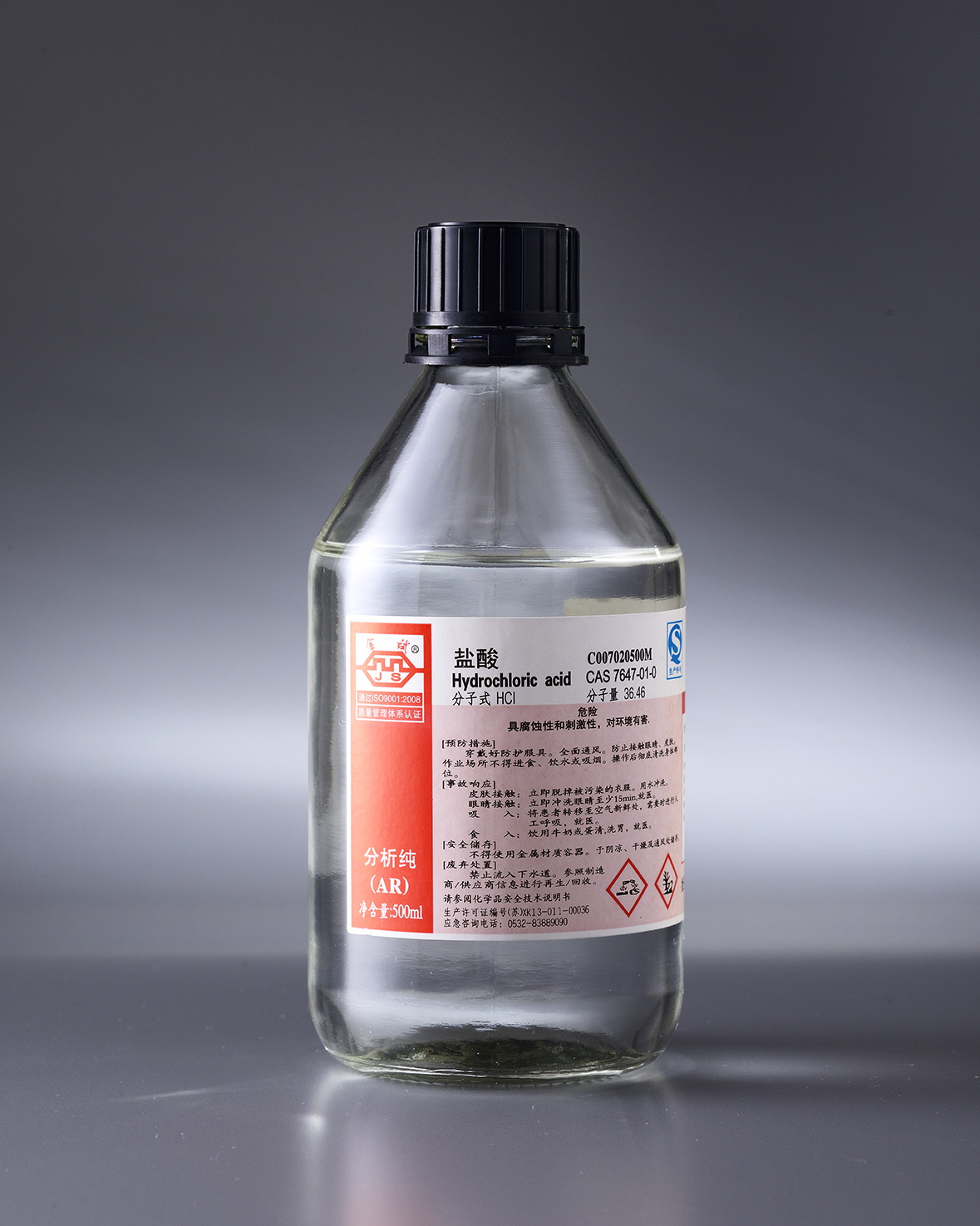Hydrochloric acid
Hydrochloric acid is an aqueous solution of hydrogen chloride (HCl) and has a wide range of industrial uses. Hydrochloric acid is a colorless and transparent liquid with a strong pungent smell and high corrosiveness. Concentrated hydrochloric acid (mass fraction of about 37%) is extremely volatile, so when a container containing concentrated hydrochloric acid is opened, the hydrogen chloride gas will evaporate and combine with water vapor in the air to produce small droplets of hydrochloric acid, causing acid to appear above the bottle mouth. fog. Hydrochloric acid is the main component of gastric acid, which can promote food digestion and resist microbial infections.
In the 16th century, Libaphius formally recorded the preparation method of hydrogen chloride. Later, chemists such as Glauber, Priestley, and Davy also used hydrochloric acid in their research.
During the Industrial Revolution, mass production of hydrochloric acid began. In the chemical industry, hydrochloric acid has many important applications and plays a decisive role in the quality of the product. Hydrochloric acid can be used to pickle steel and is also a chemical reagent required for the large-scale preparation of many inorganic and organic compounds, such as vinyl chloride, the precursor of PVC plastic. Hydrochloric acid also has many small-scale uses, such as household cleaning, production of gelatin and other food additives, descaling agents, and leather processing. Approximately 20 million tons of hydrochloric acid are produced globally every year.
On October 27, 2017, the World Health Organization’s International Agency for Research on Cancer released a preliminary reference list of carcinogens. Hydrochloric acid is included in the list of Class 3 carcinogens.




